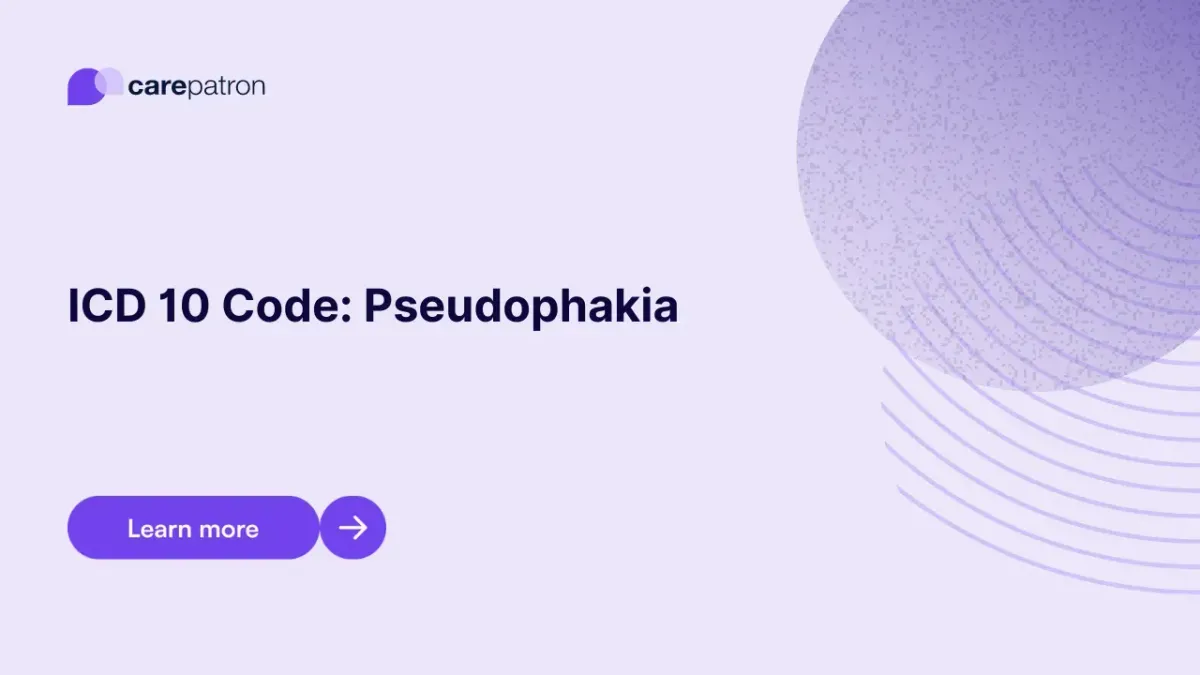
Pseudophakia ICD-10-CM Codes | 2025
Learn about the pseudophakia ICD codes you can use to enhance billing and documentation.
Use Code
Commonly asked questions
The primary code for pseudophakia is Z96.1 - Presence of intraocular lens (presence of pseudophakia).
It depends on the person. Pseudophakia doesn’t entirely remove the need for glasses or contact lenses. Some people with pseudopseudophakia may still need them to read or work.
There might be inflammations or infections, but after getting artificial lens implants, patients will be given instructions on managing their eyes during recovery. This will likely involve using eye drops to prevent inflammation and infections.
EHR and practice management software
Get started for free
*No credit card required
Free
$0/usd
Unlimited clients
Telehealth
1GB of storage
Client portal text
Automated billing and online payments
